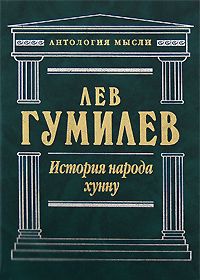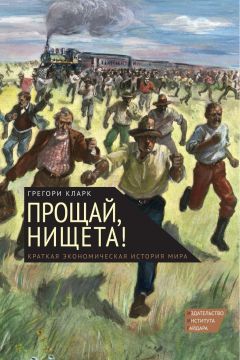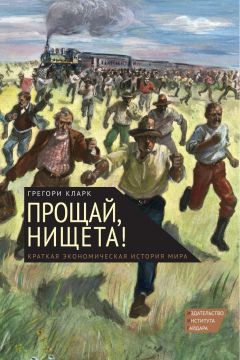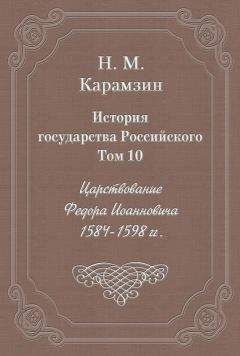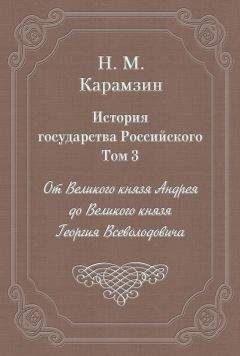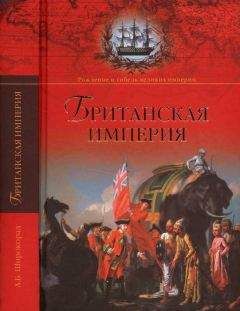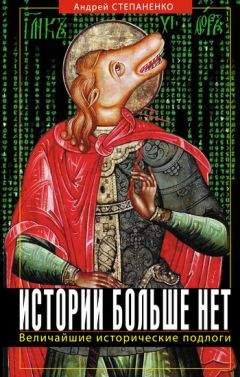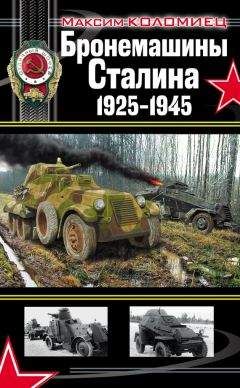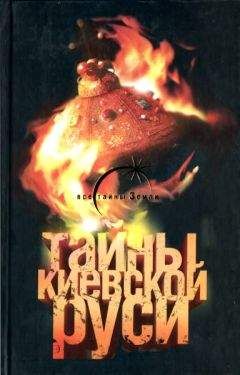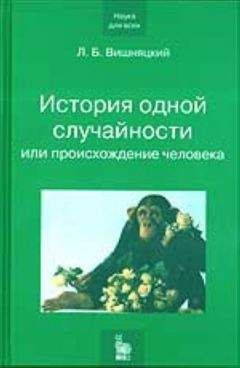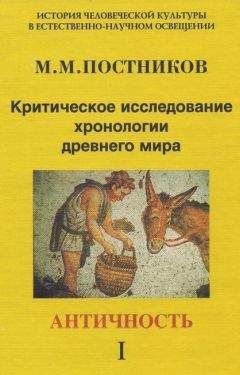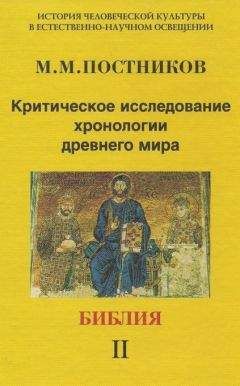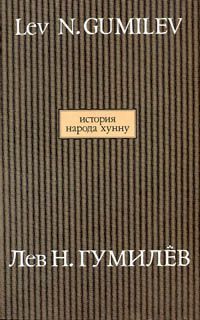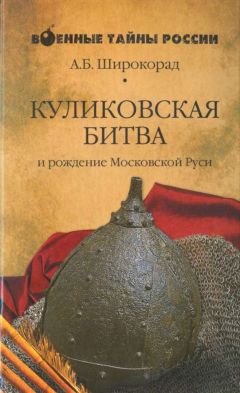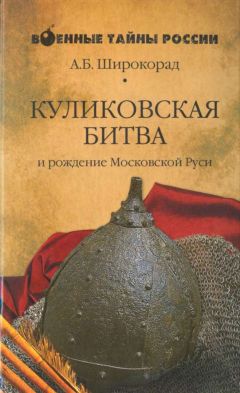Леонид Вишняцкий - Неандертальцы: история несостоявшегося человечества
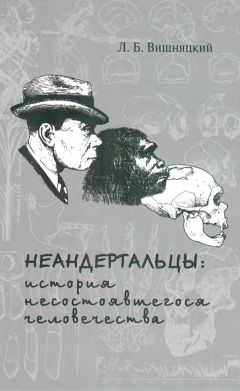
Скачивание начинается... Если скачивание не началось автоматически, пожалуйста нажмите на эту ссылку.
Жалоба
Напишите нам, и мы в срочном порядке примем меры.
Описание книги "Неандертальцы: история несостоявшегося человечества"
Описание и краткое содержание "Неандертальцы: история несостоявшегося человечества" читать бесплатно онлайн.
Неандертальцы не были нашими прямыми предками, но, тем не менее, они наши ближайшие родственники, и у нас с ними очень много общего. Называть их тупиковой ветвью эволюции, по мнению автора этой книги, столь же неверно, как неверно применять этот эпитет по отношению, скажем, к коренному населению Тасмании и другим первобытным популяциям людей, уничтоженным в результате европейской колонизации. Скорее, неандертальцев следует считать "дублерами" гомо сапиенс, запасным вариантом антропогенеза. Почему же история выбрала нас, а не их? Как происходил этот выбор? Что сыграло в нем решающую роль? Был ли он предопределен заранее или зависел больше от привходящих и потому во многом случайных обстоятельств? Автор рассматривает эти и многие другие вопросы, попутно суммируя и в доступной для неспециалистов форме излагая то, что известно сейчас о происхождении и эволюционной истории неандертальцев, их умственных и языковых способностях, материальной и зарождавшейся духовной культуре, о динамике их расселения и причинах вымирания. По каждой из перечисленных тем учтены наиболее интересные и важные сведения, имевшиеся в распоряжении палеоантропологии, археологии и смежных с ними наук на середину 2010 г. Книга адресована всем, кого занимает древнейшее прошлое человечества - от академиков до студентов и школьников старших классов.
Doyle W. У., Johnston O. On the meaning of increased fluctuating dental asymmetry: a cross-population study // AJPA. 1977. N 46. P. 127-134.
DrellJ; L. L. Neanderthal: A history of interpretation // OJA 19. 2000. P. 1-24.
Duarte C., Mauricio J., Pettitt P. В., Souto P., Trinkaus E., Van der Plicht H., Zilhao JThe early Upper Paleolithic human skeleton from the Abrigo do Lagar Velho (Portugal) and modern human emergence in Iberia// PNAS. 1999. N 96. P.7604-7609.
Duarte C.,Hillson S. W., Holliday T. W., Trinkaus E. The Lagar Velho 1 humaqn skeletal inventory // J. Zilhao and E. Trinkaus (eds). Portrait of the Artist as a Child. The Gravettian Human Skeleton From the Abrigo do Lagar Velho and Its Archeological Context. (Trabalhos de Arqueologia 22). Lisboa: Instituto Portugues de Arqueologia. 2002. P. 220-241.
Duchin L. E. The evolution of articulate speech: comparative anatomy of the oral cavity in Pan and Homo // JHE. 1990. N 19. P. 687-697.
Einwdgerer Г., Friesinger H., Handel M, Neugebauer-Maresch C, Simon U., Teschler-Nicola M. Upper Palaeolithic infant burials // Nature. 2006. N 444. P. 285.
Eiseley L. Neandertal man and the dawn of human paleontology // QRB. 1957. N 32. P. 323-329.
Estabrook V. H. Sampling biases and new ways of addressing the significance of trauma in Neandertals. Unpublished Ph. D. dissertation. The University of Michigan, 2009.
Estevez J. Vanishing carnivores: What can the disappearance of large carnivores tell us about the Neanderthal world? // IJO. 2004. N 14. P. 190-200.
Fabre V., Condemi S., Degioanni A. Genetic Evidence of Geographical Groups among Neanderthals //PLoS ONE 4(4): e5151 (doi:10. 1371/journal. pone. 0005151), 2009.
Farizy C. Spatial patterning of Middle Paleolithic sites // JAA. 1994. N 13. P.153-60.
Feblot-Augustins J. Raw material transport patterns and settlement systems in the European Lower and Middle Palaeolithic: continuity, change and variability // W. Roebroeks and C. Gamble (eds). The Middle Palaeolithic Occupation of Europe. Leiden: University of Leiden. 1999. P. 193-214.
Fedele F. G. et al. Timescales and cultural process at 40,000 BP in the light of the Campanian ignimbrite eruption, Western Eurasia // JHE. 2008. N 55. P. 834- 857.
Fernandes P., Raynal J.-P., Moncel M.-H. Middle Palaeolithic raw material gathering territories and human mobility in the southern Massif Central, France: first results from a petro-archaeological study on flint // JAS. 2008. N 35. P. 2357-2370.
Fernandez S., Fuentes N., Carrion J. S., Gonzalez-Samperiz P., Montoya E., Gil G., Vega-Toscano GRiquelme J. A. The Holocene and Upper Pleistocene pollen sequence of Carihuela Cave, southern Spain // Geobios. 2007. N 40. P. 75-90.
Finlayson C. Neanderthals and Modern Humans. Cambridge: Cambridge University Press, 2004.
Finlayson C. The Humans Who Went Extinct: Why Neanderthals Died Out and We Survived. New York: Oxford University Press, 2009.
Finlayson J. C., Barton R. N. E., Stringer С. В. The Gibraltar Neanderthals and their extinction // J. Zilhao, T. Aubry, A. Faustino Carvalho (eds). Les premiers homines modernes de la Peninsule Iberique. (Trabalhos de Arqueologia 17). Lisboa: Instituto Portugues de Arqueologia. 2001. P. 117-122.
Finlayson C. et al. Late survival of Neanderthals at the southernmost extreme of Europe //Nature. 2006. N 443. P. 850-853.
Fitch W. T. Fossil cues to the evolution of speech // R. Botha, C. Knight (eds). The Cradle of Language. Oxford: Oxford University Press. 2009. P. 113-134.
Flas D. Etude de la continuite entre le Lincombien-Ranisien-Jerzmanowicien et le Gravettien aux pointes pedonculees septentrional// PE. 2000-2001. N 16-17. P. 163-189.
Freund G. Die Blattspitzen des Palaolithikums in Europa. Bonn: Ludwig Rohrscheid Verlag. 1952.
Froehle A. W., Churchill S. E. Energetic competition between Neandertals and anatomically modern humans // PA. 2009. P. 96-116.
Gamble C. The Palaeolithic Societies of Europe. Cambridge: Cambridge University Press, 1999.
Gargett R. H. Grave shortcomings: the evidence for Neanderthal burial // С An. 1989. N30. P. 157-90.
Gargett R. H. Middle Palaeolithic burial is not a dead issue: the view from Qafzeh, Saint-Cesaire, Kebara, Amud, and Dederiyeh // JHE. 1999. N 37. P. 27-90.
Gat A. Social organization, group conflict and the demise of Neanderthals // MQ. 1999. N39. P. 437-454.
Gaudzinski S., Turner E., AnzideiA. P., Alvarez-Fernaandez E., Arroyo-Cabrales У., Cinq-Mars J.,Dobosi V. T.,Hannus A., Johnson E., Mtinzel S. C., Scheer A., Villa P. The use of Proboscidean remains in every-day Palaeolithic life // QI. 2005. N 126- 128. P. 179-194.
Gaudzinski-Windheuser S., Niven L. Hominin subsistence patterns during the Middle and Late Paleolithic in Northwestern Europe // J.-J. Hublin and M. P. Richards (eds). The Evolution of Hominin Diets: Integrating Approaches to the Study of Palaeolithic Subsistence. Springer. 2009. P. 99-111.
Geist V Neanderthal the hunter//NHR. 1981. N 90. P. 26-36.
Genty D. et al. Precise dating of Dansgaard-Oeschger ossillatioins in western Europe from stalagmite data //Nature. 2003. N 421. P. 833-837.
Giacobini G. En parallele aux sepultures. Histoire des idees sur d'autres pratiques mortuaires attribuees aux Neandertaliens // CRP. 2006. N 5. P. 177-182.
Glantz M., Athreya S., Ritzman T. Is Central Asia the eastern outpost of the Neandertal range? A reassessment of the Teshik Task child// AJPA. 2009. N 138. P. 45-61.
Goldberg E. The Executive Brain: Frontal Lobes and the Civilized Mind. London: Oxford University Press, 2002.
Gomez-Olivencia O., Eaves-Johnson K. L., Franciscus R. G., Carretero J. M, ArsuagaJ. L. Kebara 2: new insights regarding the most complete Neandertal thorax // JHE. 2009. N 57. P. 75-90.
Goodwin W., Ovchinnikov L Ancient DNA and the Neanderthals // H.-J. Bandelt, V. Macaulay and M. Richards (eds). Human Mitochondrial DNA and the Evolution of Homo sapiens (Nucleic Acids and Molecular Biology 18). Berlin/Heidelberg: Springer, 2006. P. 201-224.
Gowlett J. A. J. The early settlement of northern Europe: Fire history in the context of climate change and the social brain // CRP. 2006. N 5. P. 299-310.
Grant M. The Passing of the Great Race. New York: Ch. Scribner's Sons, 1916.
Graves-Brown P. The ghost of Cain? Neanderthals, racism and speciesism // Antiquity. 1996. N 70. P. 978-981.
Green R. EKrause У., Ptak S. E., Briggs A. W., Ronan M. Г., Simons J. F., Du L., Egholm M, Rothberg J. M, Paunovic M, Paabo S. Analysis of one million base pairs of Neanderthal DNA // Nature. 2006. N 444. P. 330-336.
Green R. E. et al. A complete Neandertal mitochondrial genome sequence determined by high-throughput sequencing // Cell. 2008. N 134. P. 416-426.
Green R. E. et al. A draft sequence of the Neandertal genome // Science. 2010. N 328. P. 710-722.
Grimaud-Herve D. L'Evolution de l'encephale chez Homo erectus et Homo sapiens. Paris: CNRS, 1997.
Grunberg J. M. Middle Paleolithic birch-bark pitch // Antiquity. 2002. N 76. P. 15-16.
Guatelli-Steinberg D. Recent studies of dental development in Neandertals: Implications for Neandertal life histories // EA. 2009. N 18. P. 9-20.
Guatelli-Steinberg D. "Growing planes": incremental growth layers in the dental enamel of human ancestors // C. S. Larsen (ed). A Companion to Biological Anthropology. Chichester: Wiley-Blackwell. 2010. P. 485-500.
Guatelli-Steinberg D., Larsen C. S., Hutchinson D. L. Prevalence and the duration of linear enamel hypoplasia: a comparative study of Neandertals and Inuit foragers // JHE. 2004. N 47. P. 65-84.
Guipert G., Mafart B. Evolution de l'os frontal d''Homo heidelbergensis QtHomo neanderthalensis et comparaison avec l'homme moderne // Anthropologic. 2005. N43. P. 159-167.
Gunz P., Harvati K. The Neanderthal "chignon": Variation, integration, and homology // JHE. 2007. N 52. P. 262-21A.
Hackett A., Dennell R. Neanderthals as fiction in archaeological narrative // Antiquity. 2003. N 77. P. 816-827.
HambuckenA. La variabilite geographique des Neandertaliens // AP. 1997. N 108. P. 109-120.
Hammond M. The expulsion of the Neanderthals from human ancestry: Marcelin Boule and the social context of scientific research // SSS. 1982. N 12. P. 1-36.
Hardy B. L. Climatic variability and plant food distribution in Pleistocene Europe: Implications for Neanderthal diet and subsistence // QSR. 2010. N 29. P. 662- 679.
Harris J. R. Parental selection: A third selection process in the evolution of human hairlessness and skin color // MH. 2006. N 66. P. 1053-1059.
Harvati К. Quantitative analysis of Neanderthal temporal bone morphology using three dimensional geometric morphometries // AJPA. 2003a. N 120. P. 232-338.
Harvati K. The Neanderthal taxonomic position: models of intra- and inter-specific craniofacial variation // JHE. 2003b. N 44. P. 107-132.
Harvati K. Neanderthals and their contemporaries // W. Henke and I. Tattersall (eds). Handbook of Paleoanthropology, vol. 3. Berlin; Heidelberg; New York: Springer, 2007. P. 1717-1748.
Harvati К., Frost S. R., McNulty К. P. Neanderthal taxonomy reconsidered: Implications of 3D primate models of intra- and interspecific differences // PNAS. 2004. N 101. P. 1147-1152.
Harvati КGunz P., Nicholson E. A 3D look at the Tabun C2 jaw // TN. 2006. N 2. P. 117.
Hawks J. Selection on mitochondrial DNA and the Neanderthal problem // K. Harvati, T. Harrison (eds). Neanderthals Revisited: New Approaches and Perspectives. Dordrecht: Springer, 2006. P. 221-237.
Hawks J., Cochran G. Dynamics of adaptive introgression from archaic to modern humans//PA. 2006. P. 101-115.
Hawks J., WolpoffM. H. The accretion model of Neandertal evolution // Evolution. 2001. N55. P. 1474-85.
Hayden B. The cultural capacities of Neandertals: a review and evaluation // JHE. 1993. N24. P. 113-146.
Hebsgaard M. ВWiuf C., Thomas M, Gilbert P., Glenner H., Willerslev E. Evaluating neanderthal genetics and phylogeny // JME. 2007. N 64. P. 50-60.
Heim J.-L. Les hommes fossiles de La Ferrassie (Dordogne) et le probleme de la definition des Neanderthaliens classiques // L'Anthropologie. 1974. N 78. P. 312-78.
Heim J.-L. La nouvelle reconstitution du crane neandertalien de la Chapelle-aux- Saints. Methode et resultats // BMSAP. 1990. N 1. P. 95-118.
Heim J.-L., Воё L.-J., Abry C. La parole a la portee du conduit vocal de l'homme de Neandertal. Nouvelles recherches, nouvelles perspectives // CRP 1. 2002. P. 129- 134.
Henneberg M. Decrease of human skull size in the Holocene // HB 60. 1988. P.395-405.
Henry A. G., Piperno D. Plants in Neanderthal diet: Plant microfossil evidence from the dental calculus of Shanidar III // PA. 2008. Al 1-A12.
Hernandez Fernandez M. Rodent paleofaunas as indicators of climatic change in Europe during the last 125,000 years // QR. 2006. N 65. P. 308-323.
Herrera K. J., Somarelli J. ALowery R. K., Herrera R. J. To what extent did Neanderthals and modern humans interact? // BR. 2009. N 84. P. 245-257.
Higham T. Revised direct radiocarbon dating of the Vindija G1 Upper Paleolithic neandertals // PNAS. 2006. N 103. P. 553-557.
Higgins R. Reassessing Neanderthal locomotor efficiency on a non-plain terrain // AJPA. 2010. N 141 (Supplement 50). P. 127-128.
Hockett В., Haws J. A. Nutritional ecology and the human demography of Neandertal extinction // QI 137. 2005. P. 21-34.
Hofreiter M3 Stewart J. Ecological change, range fluctuations and population dynamics during the Pleistocene // CB 19. 2009. R584-R594.
Holliday T. W. Postcranial evidence of cold adaptation in European Neanderthals // AJPA 104. 1997. P. 245-258
Holliday T. W. Neanderthals and modern humans: an example of a mammalian syngameon? // K. Harvati and T. Harrison (eds). Neanderthals Revisited: New Approaches and Perspectives. Dordrecht: Springer, 2006. P. 281-297.
Holloway R. L. The poor brain of Homo sapiens neanderthalensis: see what you please... // Delson E. (ed). Ancestors: The hard evidence. New York: Alan R. Liss, 1985. P. 319-324.
Подписывайтесь на наши страницы в социальных сетях.
Будьте в курсе последних книжных новинок, комментируйте, обсуждайте. Мы ждём Вас!
Похожие книги на "Неандертальцы: история несостоявшегося человечества"
Книги похожие на "Неандертальцы: история несостоявшегося человечества" читать онлайн или скачать бесплатно полные версии.
Мы рекомендуем Вам зарегистрироваться либо войти на сайт под своим именем.
Отзывы о "Леонид Вишняцкий - Неандертальцы: история несостоявшегося человечества"
Отзывы читателей о книге "Неандертальцы: история несостоявшегося человечества", комментарии и мнения людей о произведении.






